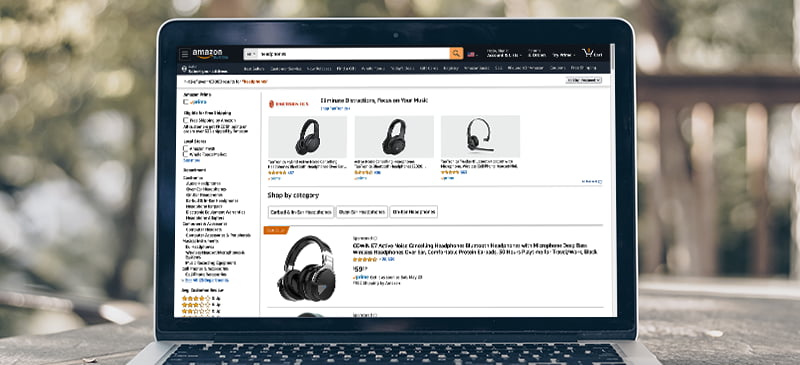
Affiliate Marketing Tips to Drive More Sales
Affiliate marketing is a method for sellers to promote their products through marketers with a loyal audience. We received several great tips from the experts for managing affiliate marketing relationships, both for sellers and for affiliates. Learn more about commission structure, data tracking, and selecting partnerships.

Tonia Miller
Senior Manager, Affiliate, Ovative Group
Focus on the personal relationships.
Let’s go back about 10 years ago, when affiliate was still a little-known, misunderstood digital channel. We would meet up annually in Vegas, packing 15-minute meetings into two very full days. We still do this today, but faces have changed and affiliate has become a key channel in most retailers’ digital strategy. One thing that will always set affiliate apart—personal relationships. Just as much as the initial conversations had in the dark ages of affiliate, strong communication is equally important.
Calls
Make time for this form of communication. Having a fluid conversation about trends, opportunities, company updates, and a bit of small talk goes such a long way. Pro tip: hop on a video call and take advantage of the digital face-to-face.
Newsletters
While sending out a mass email to publishers may seem like an unlikely way to truly engage, there are ways to enhance this medium. In addition to sending promotions, make sure to include new products, best sellers, and other information to enable them with the information needed to be successful as an affiliate. Pro tip: personalize the message to increase engagement and response.
Email check-ins
Send email check-ins on performance, quarterly reviews, new product offerings, etc. Pro tip: make sure to send messages for key moments in life—promotions, acquisitions, weddings, babies, and other personal events.
Conferences
Attendance to affiliate networking events is a huge moment to develop partnerships. Face-to-face meetings to chat through the partnership and get to know each other can elevate the experience and quality of new partnerships.
Onsite Meetings
Outside of conferences, we have little face-to-face time with the publishers we work with on a daily basis. When the opportunity arises, spending time onsite can help take the partnership to a new level.
Ben Cowie
Head of Affiliates, We Influence
Reevaluate your commission structure and assess the value of your partnerships.
If a client asks me to cast an eye on their affiliate program with a view to optimising it, the first thing I’ll look at is the program’s commission structure.
Can we make any savings? Can we encourage some affiliates to do more? And this isn’t the only time the commission structure will come under scrutiny. Every day, affiliates are looking for new programs to join and you’d be hard pushed to disagree that the main thing they’re looking for is a juicy commission structure.
With increasing uncertainty over attribution and where each marketing channel fits into the conversion funnel, it has become more important than ever to take a smarter approach to the way you reward your affiliates.
Fortunately, by shifting the way you think about your affiliate program, you can increase efficiency and performance with some easy changes.
Here are a few things to think about when setting your commission structures:
How much margin can you afford to give away?
Set an upper limit, but always set your default commission structure well below that. You then have room to negotiate bespoke agreements for extra exposure.
What value does the affiliate add to your business?
Every affiliate is different. One might be really good at driving new customer traffic to your site, but not converting it. Another might be great at getting sales over the line but only after other channels have got the customer there to begin with.
Could you reward the affiliate more for more work?
You never want to get into a scenario where the affiliate is happy with their commission for doing the bare minimum to promote your brand. They shouldn’t be rewarded handsomely for very little work, but at the same time you should encourage them to work harder for you by offering higher commission tiers.
What are your competitors offering?
It’s important to understand what else is out there for your affiliates. However, lots of brands place too much emphasis on beating their competitors’ rates.
So, while you don’t want to be offering 1% commission when your competitors are offering 15%, you shouldn’t worry about being the highest in your sector. Offer what you can and build your partnerships on your terms.

Sophie Metcalfe
Client Services Director, Commission Factory
Your data tracking will provide better insights with time.
As affiliate programmes mature and their value scrutinised, advertisers will need to take a deeper analytical-dive to identify and implement a more strategic approach to their commission structure. There are requirements to cater for both publisher engagement and profit margins. Therefore rewarding based on the types of customers delivered through the channel and their long term value, or setting intelligent commissions, is the ultimate goal.
Here are three areas to focus on when looking at an Intelligent Commission Strategy.
Track more
As much information about each transaction as possible, in order to contribute to the profiling of customer types. Incorporate parameters such as new vs. existing, product type, location and device and make the most of any custom parameters the network can provide.
Track longer, monitoring affiliate sales data over a longer period to build a picture of customer lifecycles and their behaviour beyond the initial conversion, monitoring consistency vs. change.
Incorporate CRM data
Tie sales back from your affiliate programme to your CRM using the order reference tracked into your affiliate programme as the common denominator. Look at repeat purchase patterns, average spend and lifetime value to set programme, and even partner level, commissions, to make the programme work as efficiently as possible.
Flexibility
Whilst networks advocate (broadly speaking) having an overarching last click payment model, there needs to be flexibility within this to cater to upper-funnel traffic. Controlled tenancy models measured by influence reporting or post view rewards are all strategies that support the long tail with minimal disruption to the other publisher types.
Intelligent commission setting is an investment of time and analysis which requires periodic data review. It’s modelling accuracy gets stronger over time. However, the investment should pay dividend by ensuring your programme runs at optimum return efficiency, and demonstrates it as a valuable, transparent and sophisticated acquisition channel.

Kandice Hutcheson
Founder, Horde Marketing
If you are an affiliate marketer, start by promoting brands and products that you trust.
Affiliate marketing is a smart way to earn some extra income on the side because the hours tend to be flexible and you can do it from the comfort of your own home. But it takes a significant amount of work to get started and a strong work ethic to succeed.
Find Your Niche
Focus your affiliate marketing on a specific niche. It’s a great way to differentiate yourself from the crowd. Choose a topic that interests you, as you will need to become an expert in that area to build authority and trust.
Start with Brands You Believe In
Building trust with your audience is essential to your success. If you start by marketing brands that you personally know and love it will be a lot easier to convince your audience to purchase the product and start building their trust.
Choose Your Products Carefully
Your time is valuable, and you want to be able to use it wisely. Learn about your products and partners before you begin promoting them. An inferior product will lead to lost time and money.
Keep an Eye on Your Tracking
Search engines and other sites are continuing to crack down on third-party tracking cookies that affiliate marketers often use to get credit for a sale. Keys to keeping your tracking on track:
- Make sure you have your tracking properly set up. Reach out to an expert for help if you need it.
- Try to coordinate with the vendor or distributor whenever possible.
- And regularly check your tracking to make sure you are not missing out on any of your hard-earned money.
A Solid Content Creation and Distribution Plan Is Key to Your Success
Frequent content creation is one of the best ways to build your audience. Work in a variety of content types—written, video, infographics, case studies, reviews, etc. And narrow down your distribution channels to the ones that work best for you and your niche. A focused, organized approach will help keep you on track.

Irina Munteanu
Performance Marketing Specialist, Vivre
Give your partners the tools they need to make you successful.
Keep your partners informed
Make sure your partners (affiliate/publisher) have all the information they need in order to promote your products.
Let them know if you have special sale events, or if you provide free delivery, or if you offer discounts, or you give vouchers for new client accounts.
Help yourself by helping them
Provide them with the right materials in order to help them promote you. Here you can provide:
- Banners (different sizes, clear CTA, general or for a category/product)
- Product feeds—many affiliates work with product feeds because they do not need to change the links when a product is out of stock, or they can work with volumes. By helping them with a feed you will make their job easier and they can focus on improving their strategies.
Focus on top
Select your top partners and concentrate on them. Keep in mind that it is not just about the value of the sales but also about Clicks, CPC, CPA, New Users, Old Users and so on.
Connect and reconnect
It is important to stay connected with your affiliates and keep them engaged. You can organize for example competitions, or invite them to have an open discussion at your office, or any other activity to keep them active in promoting your program.
Try new things, learn and improve
We all have hypotheses of what we think will work or not, do not be afraid to test. The only thing that you should be most afraid of is to let things happen the same way year after year. So, keep yourself informed, read, learn, make a new strategy, test it, measure it and see how you can improve/grow.
Related Content

Tips to Help You Successfully Manage Your Digital Marketing Agency

Tips to Help Marketers with Amazon Ads
